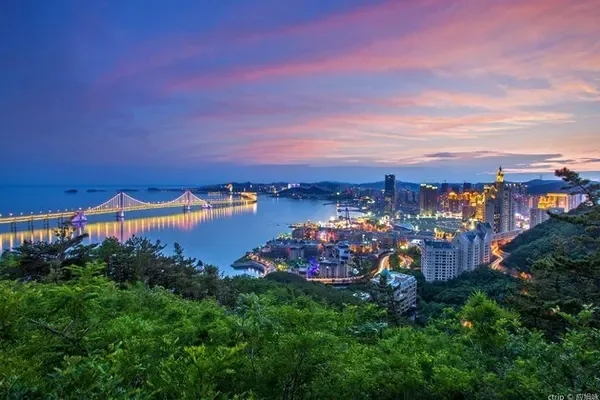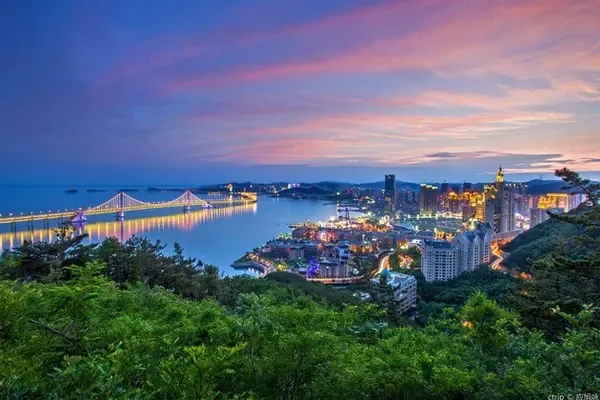It is no exaggeration to say that almost every Chinese has a dream of self-driving in Tibet, some because they have no time, some because they have no money, and some because they have no experience...From Sichuan-Tibet South Line G318 enters, Qinghai-Tibet line G109 exits, commonly known as "Sichuan in and Qing out", the round trip takes 16 days, and the total journey is more than 7,000 kilometers.
Road map of Tibet by car
At present, among the 8 self-driving routes into Tibet, the most conventional and well-known route is the Sichuan-Tibet line, followed by the Qinghai-Tibet line. Most of the time, when people talk about the Sichuan-Tibet line, they default to National Highway 318
In fact, the Sichuan-Tibet line is divided into the southern line (G318 National Highway) and the northern line (G317 National Highway). The mileage of the two lines is different, the road conditions are different, the scenery is different, and the driving time required is also different.
Tongmet Bridge
Today, I will share with you the self-driving itinerary plan of the Sichuan-Tibet South Line and the North Line, for reference only
Sichuan-Tibet South Line (318 National Highway)
D1: Chengdu - Ya'an - Tianquan - Luding - Kangding - Yajiang (about 465 kilometers)
D2: Yajiang - Litang - Daocheng - Shangri-La Town (about 395 kilometers)
D3: Shangri-La Town - Yading Scenic Area (about 30 kilometers)
D4: Shangri-La Town - Litang - Batang (about 325 kilometers)
D5: Batang - Mangkang - Zuogong - Basu (about 460 kilometers)
D6: Basu - Bomi - Nyingchi (about 450 kilometers)
D7: Linzhi - Lhasa (about 410 kilometers)
D8: Lhasa
The Sichuan-Tibet South Line (G318 National Highway) spans the east, middle and west of China, covering plains, hills, basins, plateau landscapes, and Tibetan cultural landscapes. It has breathtaking, dangerous, beautiful and natural landscapes from the plains to the plateau. The variety of types is rare in the world, and it is known as "the most beautiful landscape avenue in China".
Representative scenic spots: Zheduo Mountain, Eighteen Bends of Tianlu, Daocheng Yading, Maoya Prairie, Dongda Mountain, Ranwu Lake, 72 Turns of Tianlu
Seda
Northern Sichuan-Tibet Line (317 National Highway)
D1: Chengdu - Dujiangyan - Wenchuan - Malkang (about 310 kilometers)
D2: Maerkang - Seda (about 280 kilometers)
D3: Seda - Ganzi County - Dege (about 330 kilometers)
D4: Dege - Jiangda County - Qamdo (about 325 kilometers)
D5: Qamdo - Leiwuqi - Dingqing (about 240 kilometers)
D6: Dingqing - Baqing (about 220 kilometers)
D7: Baqing - Suo County - Ru County - Sapu (about 360 kilometers)
D8: Sap - Nagqu (about 310 kilometers)
D9: Nagqu - Dangxiong (about 170 kilometers)
D10: Damxung - Lhasa (about 160 kilometers)
The landscape of the Sichuan-Tibet Northern Line (G317 National Highway) is centered on the steep and majestic mountains and valleys and the mysterious and pious Tibetan Buddhist culture.
Representative attractions: Queer Mountain, Seda, Zizhu Temple, Sapu Mountain, Namtso
Zizhu Temple
If it is the first time to go to Tibet by car, I personally recommend that you choose the Sichuan-Tibet South Line (318 National Highway)
There are two reasons. On the one hand, the road conditions are better, and the entire asphalt road is relatively low in difficulty. On the other hand, the service facilities and capabilities of National Highway 318 are better, and accommodation, meals, car repairs, and medical treatment are all more convenient
The road conditions of the Northern Sichuan-Tibet Line (G317 National Highway) are poor, and SUV models are required to pass, and a certain amount of self-driving experience is required. There are few towns along the way, and supplies are not convenient enough
Potala Palace
safety warning
No matter which route you take to drive to Tibet, ensuring safety is the first principle. Traveling in high-altitude areas is different, so here are four safety tips:
1. Self-driving to Tibet, the road conditions are more complicated, you must concentrate on driving, do not drive while watching the scenery, and do not observe the scenery while driving
2. In high-altitude areas, the acceleration and braking performance of the vehicle will decrease, so it is necessary to make a good advance
3. Obey the rules and laws, don't drive tired, don't drive aggressive cars, and ensure safety when overtaking
4. When high reaction causes physical discomfort, seek medical treatment immediately, so as not to procrastinate and become more serious
I wish every friend who drives to Tibet to set off happily and return safely


